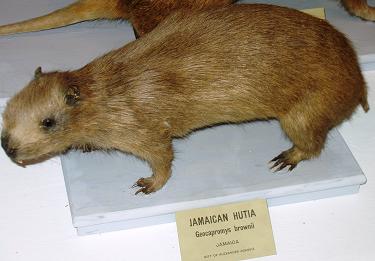Facts About Jamaican coney
The Jamaican coney, also known as the Jamaican hutia or Brown's hutia, is a distinctive mammal endemic to Jamaica. It belongs to the rodent family Capromyidae and is closely related to hutias and guinea pigs. Approximately the size of a cottontail rabbit, the Jamaican coney weighs between 1 and 2 kilograms and has a coat that ranges from reddish-brown to yellowish-brown. This small creature is characterized by a large head, short legs, ears, and neck, a small tail, and prominent incisors and cheek teeth.
You’ll find the Jamaican coney in the rocky, forested areas of Jamaica, particularly in remote and mountainous regions. It is primarily nocturnal, feeding on fruits, roots, bark, and foliage. Although sightings in the wild are rare, the species is not excessively difficult to locate. Nevertheless, their population has been decreasing, securing them a place on the IUCN Red List of Endangered Species.
Jamaican hutias are quite social. They engage in grooming, play, and communicate through various vocalizations. They exhibit a semi-plantigrade stance, meaning they walk on the soles of their feet like humans. These animals are also adept climbers and jumpers, using their front incisors to grip surfaces. While little is known about their reproductive habits in the wild, observations in captivity indicate that females reach maturity around one year of age. They typically give birth to around two offspring per litter after a gestation period of approximately 123 days. The young are notably developed at birth, able to walk and consume solid food shortly thereafter.
